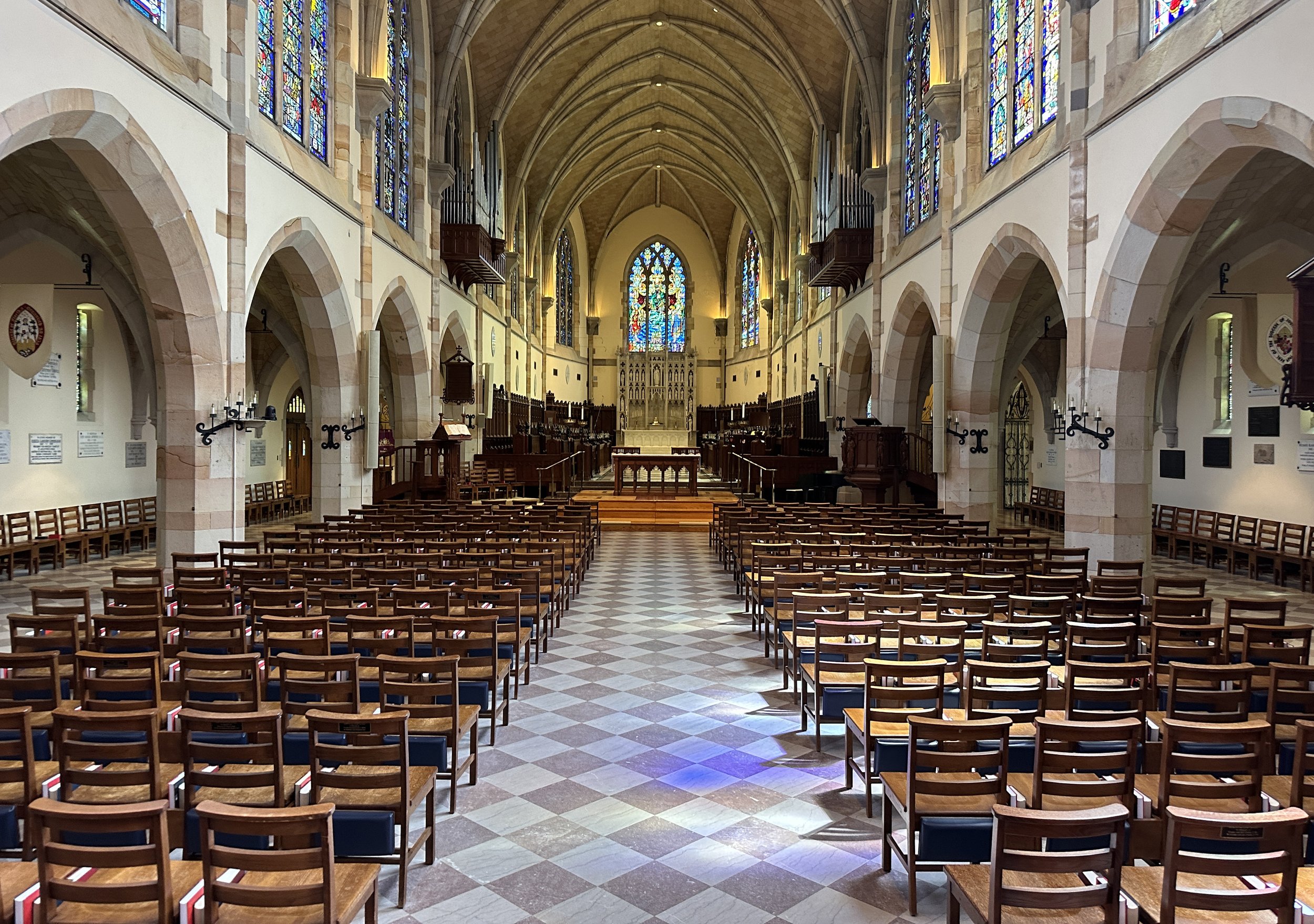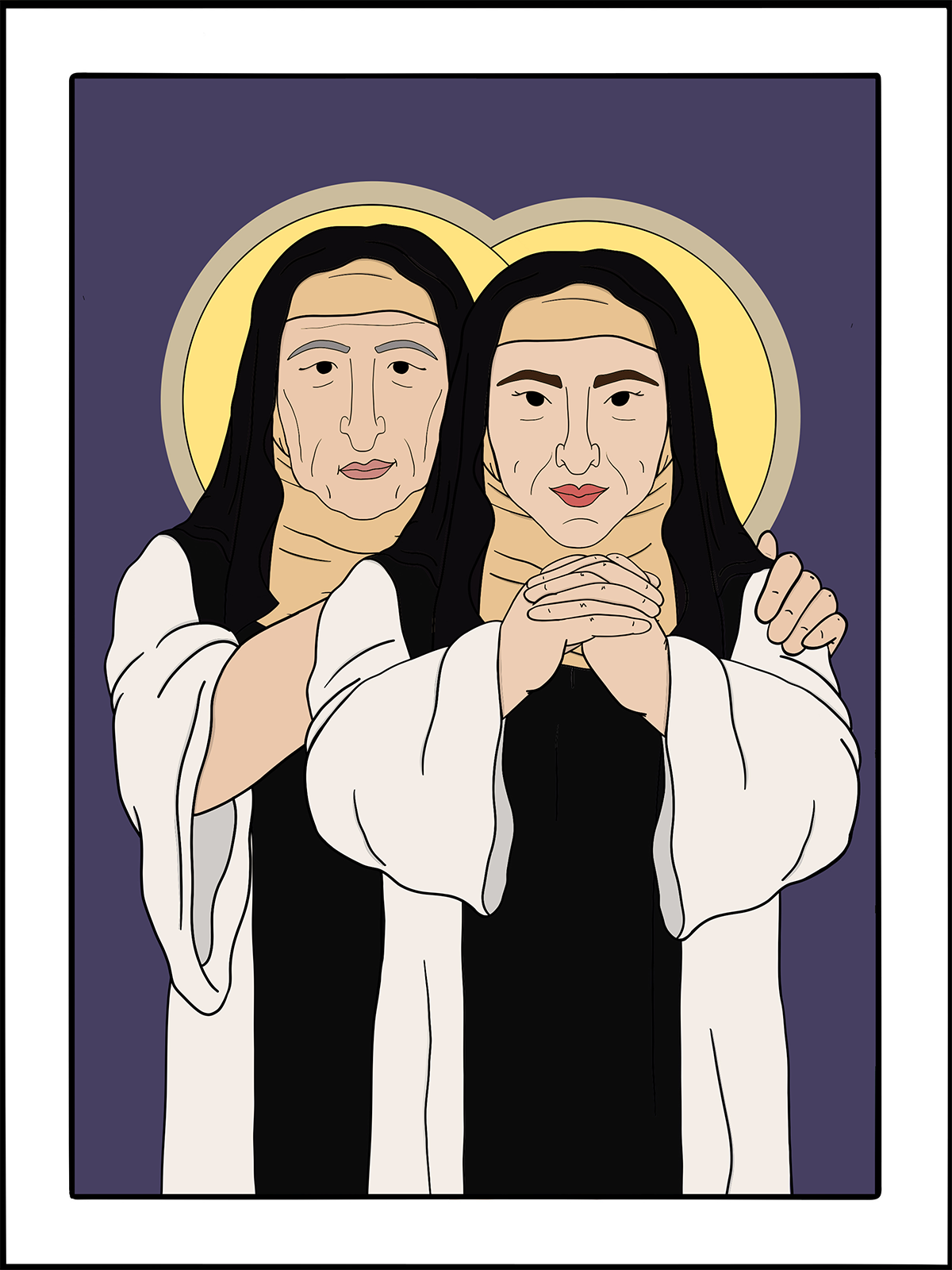
September 28
Paula and Eustochium of Rome
Monastics and Scholars, 404 and 419
art by Rev. Kirsten Kohr of Geneva, Ohio Compel us, O God, to attend diligently to your Word, as did your faithful servants Paula and Eustochium; that, by the inspiration of the Holy Spirit, we may find it profitable for doctrine, for reproof, for correction, and for instruction in righteousness; and that thereby we may be made wise unto salvation through faith in Christ Jesus our Lord. Amen.
Paula (b. 347) was descended from Cornelia Africana, the mother of the Gracchi. As Cornelia was the model of a Roman Matron whose sons were her only jewels, so Paula became the model of the Desert Mother whose wealth was surrendered to the service of God. Married at a young age, she had five children and was widowed at age 32. Though she had lived in patrician luxury, after being widowed she was inspired by the example of Marcella (January 31) and devoted her life to the worship of God, rigorous asceticism, and service to the needy. Both Marcella and Paula converted their palaces into monasteries and gathered to them many windows and virgins.
In 382, Paula met Jerome, who had come to Rome at the invitation of Bishop Damasus, and was residing in the home of Marcella. Paula and her daughter Eustochium (b. 386) took to the irascible scholar and preacher of asceticism. They became Jerome’s dearest companions and the only antidotes to his infamous wrath. They restrained his temper and frequently recalled him to the mildness and humility that Christ enjoins. While urged by her noble family to marry, Eustochium, under the guidance of Jerome, made a vow of perpetual virginity. Jerome’s famous De custodia virginitatis was written for her instruction.
Fluent in Greek, Paula and Eustochium were ardent students of the scriptures and they quickly mastered Hebrew under Jerome’s tutelage. When he left to return to the East, Paula and Eustochium followed after him, making a pilgrimage of the Holy Land. The three of them settled in Bethlehem and there Paula had four monasteries erected—one for men, over which Jerome presided, and three for women.
In Bethlehem, their passion for the study of scripture only grew, and their challenging questions led Jerome to write many of his commentaries. Under Paula’s persuasive and persistent influence,
Jerome undertook a new Latin translation of the Bible from the original languages, which came to be known as the Vulgate. Paula also provided the books that were essential to Jerome’s work. She and Eustochium suggested revisions to his translation drafts and edited all his works, and the women of their convents were the scribes who made copies of the finished work available. Paula and Eustochium were Jerome’s colleagues in this work and without them there would be no Vulgate.
Paula presided over the Bethlehem monasteries for twenty years until her death in 404. In his eulogy for her, Jerome wrote: “If all the members of my body were turned into tongues and all my joints were to utter human voices, I should be unable to say anything worthy of the holy and venerable Paula.” After the death of her mother, Eustochium assumed direction of the monasteries. Eustochium died in 419 or 420, her eyes closed by her niece Paula, who took over direction of the monasteries after her death.
Excerpted directly from “Lesser Feasts and Fasts 2022,” p. 438-439.

